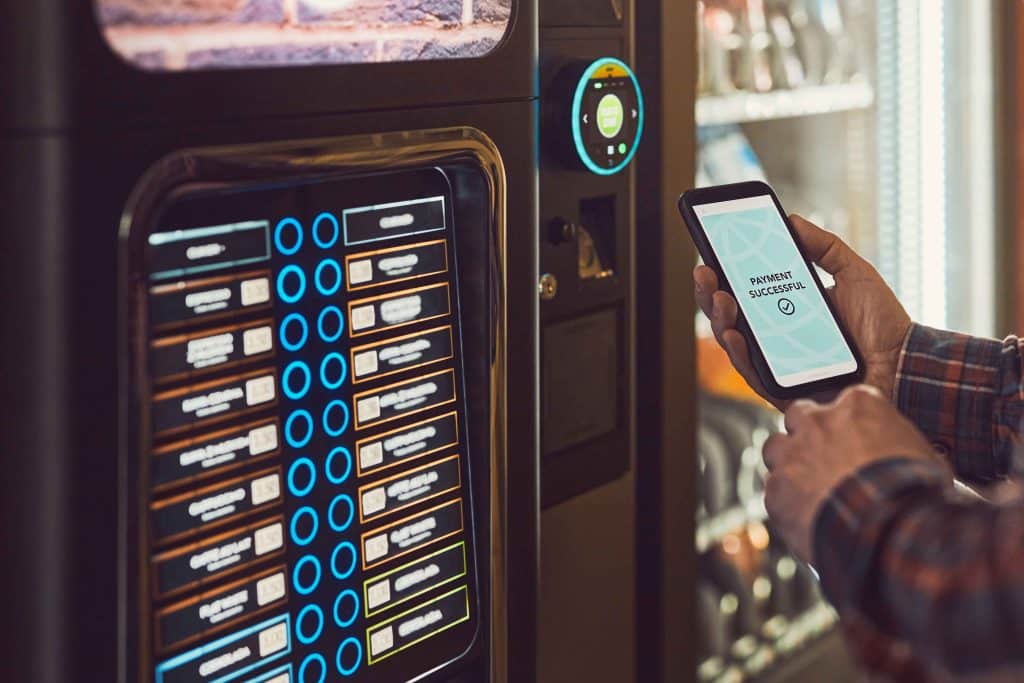In the world of food service management, seeking innovative ways to enhance operational efficiency is paramount. A remarkable consideration is the integration of auto invoicing into your commissary ordering system. This approach may offer significant benefits, from streamlining administrative tasks to improving financial accuracy and expediting payment processes.
While the concept seems straightforward, its implementation and optimization require a deeper understanding. So, what would it mean for your business to adopt such a system? How could it transform your operations?
Join us as we unpack the potential of this transformative technological solution.
Get Free Consultation
Key Takeaways
- Auto invoicing reduces administrative burdens and improves accuracy in commissary ordering systems.
- Integration of auto invoicing accelerates payment processes, enhancing cash flow management.
- Successful integration requires appropriate technology and troubleshooting of common issues.
- Future advancements in automation and financial tech offer exciting potential for further streamlining commissary operations.
Introduction to Commissary Ordering Systems and Auto Invoicing
Commissary ordering systems are pivotal in enhancing the efficiency of kitchen and food service operations. The incorporation of auto invoicing plays a significant role in transforming financial transactions within these settings.
When integrated with accounting systems, they provide remarkable efficiency gains and streamline financial operations.
Read more about our Technology Solutions!
Defining Commissary Ordering Systems
In the domain of food service management, commissary ordering systems serve as an integral component, designed to streamline kitchen operations by facilitating efficient inventory management, order placement, and tracking.
This system is pivotal to achieving operational efficiency, particularly through the integration of automated invoicing.
- Operational Efficiency and Cost Savings: Streamlining processes reduces time consumption and operational costs.
- Data Accuracy and Financial Integration: Automated invoicing enhances data accuracy while seamlessly integrating with financial systems.
- Vendor Relationships and Reporting Analytics: The system fosters improved vendor relationships and provides insightful reporting analytics.
- Workflow Optimization: Inventory management is significantly improved, enhancing overall workflow.
Conclusively, the integration of commissary ordering systems and auto invoicing presents a compelling avenue for cost savings and workflow optimization.

The Role of Auto Invoicing
As a key component in modern commissary operations, auto invoicing plays a transformative role by streamlining financial transactions and enhancing overall efficiency. The automation benefits of such a system bring about significant invoicing advantages, such as efficiency gains and financial accuracy.
Auto invoicing allows for faster and more precise payment processing, leading to operational improvements. The seamless integration of auto invoicing into existing systems guarantees data precision, which in turn enhances cash flow management.
This is because the system setup eliminates manual errors, speeding up transaction times and reducing administrative costs. Auto invoicing, therefore, serves as a powerful tool in modernizing commissary operations, ensuring financial accuracy, and driving operational efficiency.
Benefits of Integration with Accounting Systems
Building on the efficiency and accuracy benefits of auto invoicing, its integration with existing accounting systems greatly amplifies these advantages, providing a complete solution for financial management in commissary operations. The integration benefits include:
- Cost Saving Strategies: Accounting integration allows for the automation of invoice processing, reducing labor costs and enabling better budget management.
- Financial Efficiency: Streamlined processes reduce redundancy, enhancing financial accuracy and enabling payment optimization.
- Automation Advantages: Software implementation reduces manual errors, improving overall financial efficiency.
- Seamless Operations: The integration facilitates seamless operations by syncing data between ordering and accounting systems, enabling real-time financial reporting and aiding in decision making.
These advantages solidify the value of integrating auto invoicing into your commissary ordering system.
How Auto Invoicing Enhances Commissary Operations
Integrating auto invoicing in commissary operations can greatly reduce the administrative burden by minimizing manual data entry and associated errors. It can also improve financial reporting accuracy, ensuring precision in invoicing and financial records.
Additionally, it expedites the payment process, leading to improved cash flow management.
Reducing Administrative Burden
One significant advantage of integrating auto invoicing in commissary ordering systems is the substantial reduction in administrative workload. This is achieved through:
- Streamlining processes: Auto invoicing replaces manual data entry, simplifying operations and improving efficiency by automating tasks.
- Reducing errors: The automation of invoicing reduces human errors, thereby boosting accuracy in financial transactions.
- Enhancing productivity: By increasing speed in invoice processing, staff can focus on more critical tasks, thus enhancing productivity.
- Optimizing workflows: Auto invoicing provides better control over invoicing procedures, optimizing workflows and freeing up time for strategic decision-making.
In summary, auto invoicing transforms commissary operations, paving the way for seamless efficiency.
Improving Accuracy in Financial Reporting
In addition to reducing the administrative burden, auto invoicing greatly enhances the accuracy of financial reporting in commissary operations. It guarantees financial precision and data integrity, maintaining invoice accuracy and reporting reliability.
By automating the process, transaction consistency is achieved, leading to payment efficiency. This system minimizes human errors, greatly contributing to error reduction. Auto invoicing promotes financial transparency as all transactions are logged and easily traced. This guarantees audit readiness and eases the task of providing evidence for financial audits.
Finally, the process provides compliance assurance as the system is designed to comply with financial regulations. As a result, auto invoicing improves the accuracy in financial reporting.
Speeding Up the Payment Process
Through the implementation of auto invoicing, commissary operations can expedite the payment process. This approach offers numerous benefits:
- Payment Optimization: Auto invoicing enables streamlined processing, reducing the time between order placement and payment receipt.
- Transaction Acceleration: Automated systems facilitate instant invoice generation, leading to faster transactions.
- Cash Flow Enhancement: By accelerating payments, businesses can improve cash flow, a critical aspect of financial health.
- Financial Efficiency: Invoice automation eliminates manual intervention, reducing errors and enhancing financial efficiency.

Incorporating auto invoicing into commissary operations not only fosters payment acceleration and billing streamlining, but it also paves the way for transaction expediting and overall financial processing enhancement. When executed properly, this can be a game-changer in the area of payment facilitation.
Technical Integration of Auto Invoicing in Commissary Kitchens
The incorporation of auto invoicing into commissary kitchen operations requires a thorough understanding of the technical elements involved. It is essential to discuss the initial setup process, the technological requirements, and potential issues that may arise during integration.
By elucidating these points, we can provide a detailed guide for smooth auto invoicing integration within a commissary ordering system.
Setting Up the Integration
Before starting on the journey of integrating auto invoicing into your commissary ordering system, it is essential to understand the necessary steps involved in the setup process. This process includes:
- Identifying integration challenges and addressing system compatibility.
- Implementing data security measures and working on vendor communication.
- Establishing performance metrics and collecting user feedback for continuous improvement.
- Undertaking cost analysis to understand the integration benefits.
Consider the following implementation tips. First, confirm adequate training for your staff to handle the new system. Second, maintain a consistent dialogue with your vendor to troubleshoot any arising issues. Finally, always prioritize data security to protect your financial information. Proper planning and execution can make this integration a seamless and efficient process.
Technology Requirements
Having established the steps for setting up the integration, it’s important now to contemplate the specific hardware and software requirements necessary to support the implementation of auto invoicing in your commissary ordering system.
Key considerations should include software compatibility, hardware requirements, and data security measures. Vendor support and training resources are important to address potential integration challenges. System updates must be accommodated within the implementation timeline and budget, and cost considerations should be carefully evaluated. Additionally, performance metrics are essential to assess the success of the integration.
Importantly, the chosen solution should offer robust data security to protect sensitive financial information. Adequate planning and thorough vendor support can help guarantee a smooth and effective implementation process.
Troubleshooting Common Integration Issues
Despite careful planning and preparation, some common issues might arise during the integration of auto invoicing into your commissary ordering system.
- System Compatibility: It’s essential to confirm that the auto invoicing software is compatible with the existing commissary system. Incompatibility can lead to malfunctions and unsuccessful integrations.
- Data Synchronization: Real-time synchronization of data between the ordering system and the invoicing software is critical. Any delay or inconsistency can cause errors in invoicing.
- Network Connectivity: A stable network is crucial for seamless integration. Any disruption in connectivity can lead to data loss or system downtime.
- User Training: Adequate training for users is necessary to ensure they can effectively use the newly integrated system. Lack of proper training can lead to user errors and inefficient use of the system.

Case Studies: Success Stories from the Field
In our exploration of auto invoicing within commissary ordering systems, we now turn to real-world examples that demonstrate its effectiveness. We will examine specific case studies that highlight various aspects, such as the impact on commissary operations team members and the overall transformation of a food service system.
Insights and feedback from these actual implementations will further illuminate the benefits and process of integrating auto invoicing.
Example of Commissary Food Service System
To illustrate the transformative power of auto invoicing, let’s consider a real-world example of its integration in a busy commissary food service system.
- Cost analysis: Auto invoicing enabled swift and accurate tracking of expenditures, leading to more precise budgeting.
- Inventory management: By tying auto invoicing to order fulfillment, stock levels could be tracked and controlled in real time.
- Menu optimization: With accurate cost analysis and inventory management data, the establishment could optimize their menu offerings.
- Customer satisfaction: The improved efficiency led to faster service and enhanced customer satisfaction.
This integration streamlined staff training, strengthened supplier relationships, and improved data analytics. It also contributed to initiatives for quality control, waste reduction, and sustainability.
Impact on Commissary Operations Team Members
The implementation of auto invoicing within commissary operations has greatly altered the roles and responsibilities of team members, typically leading to more efficient workflows and reduced administrative burdens.
Team engagement has heightened as task allocation is streamlined and performance metrics are met more easily. This operational impact has led to increased employee satisfaction. However, the change management process has necessitated new training needs and communication strategies. Skill development programs have been geared towards mastering the new system, enhancing workflow optimization.
Despite the initial change, the switch to auto invoicing has proved beneficial, with most teams reporting improved efficiency and satisfaction. The success stories from the field underscore the benefits of integrating auto invoicing in commissary operations.
Feedback from Commissary Kitchens
Drawing on the experiences of those who have successfully integrated auto invoicing into their commissary operations, a plethora of insightful feedback has emerged, underscoring the transformational impact of this financial tech integration.
- Kitchen Feedback and User Testimonials: Overwhelmingly positive, kitchens reported efficiency gains, improved process flow, and improved customer satisfaction.
- Operational Insights: System integration led to significant process improvements, enhanced team collaboration, and more accurate performance metrics.
- Efficiency Gains: Workflow optimization was a key benefit, reducing manual tasks and freeing up time for value-added activities.
- Customer Satisfaction: The seamless invoicing process resulted in happier, more satisfied customers, affirming the positive impact of integration on overall business performance. The feedback validates the transformative potential of auto invoicing in commissary operations.

Future Trends in Commissary Food Service Technology
Moving forward, the landscape of commissary food service technology is poised to evolve. We will explore imminent technological advancements, particularly those that could refine the auto invoicing process further.
Additionally, we will consider the dimensions of expanding automation in commissaries and the critical aspects of maintaining compliance and security in the face of these advancements.
Advancements in Financial Tech for Commissaries
As we investigate the future trends of commissary food service technology, significant advancements in financial tech are set to revolutionize operations in commissaries.
- Advancements in Automation and Financial Integration: Progressive automation is anticipated to streamline payment processing, enhancing operational efficiency in commissaries.
- Technological Enhancements and Innovations: Future solutions are expected to bring about seamless operations, incorporating cutting-edge financial integrations.
- Regulatory Compliance and Data Security: With the rise of technology, an increased emphasis on regulatory compliance and data security is important to safeguard business operations.
- Operational Efficiency: The integration of advanced financial tech promises to bring about a new level of efficiency in commissary services, paving the way for a future of seamless, automated operations.
Expanding the Scope of Automation
Building upon the advancements in financial technology, the future of commissary operations is poised to witness even broader automation, encompassing more than just financial transactions. The automation expansion will result in operational enhancements, process optimization, and improved technology integration.
This will ultimately yield significant efficiency gains. Future innovations are expected to address key areas such as system scalability, meeting growing demands with ease. While the expansion will focus on improving operations, it will also uphold compliance standards, incorporate stringent security measures, and make sure robust data protection.
Thus, the scope of automation widens, it will not only revolutionize how commissaries function but also set a new standard for efficiency, security, and scalability in food service technology.
Maintaining Compliance and Security
While the expansion of automation brings numerous benefits, it is essential to concurrently prioritize maintaining compliance standards and enhancing security measures in commissary food service technology. This encompasses:
- Maintaining compliance: Adhering to regulatory requirements is a must. Technology advancements should not compromise legal compliance.
- Data security: Implementing robust cybersecurity measures and privacy protection are key in safeguarding sensitive information.
- Risk management: Businesses should have strategies in place to mitigate potential security threats.
- Secure transactions: Auto invoicing solutions should guarantee the security of financial transactions.
In a world increasingly reliant on digital solutions, ensuring information security is of paramount importance. Therefore, any advancements in food service technology should factor in these critical elements for a smooth, secure operation.

Conclusion
In closing, the amalgamation of auto invoicing in commissary ordering systems is a beacon of innovation, greatly enhancing operational efficiency and financial accuracy. As the adage goes, ‘necessity is the mother of invention,’ the food service industry is continually evolving, embracing automation and technology.
Auto invoicing, therefore, potentially represents a significant future trend, promising to further revolutionize the industry by reducing administrative burdens and optimizing operational processes.
Frequently Asked Questions
What Are the Initial Costs Associated With Implementing an Auto Invoicing System in a Commissary Kitchen?
Initial costs for implementing auto invoicing in a commissary kitchen encompass system compatibility, vendor selection, maintenance, software upgrades, security measures, data backup, system scalability, integration challenges, and technical support, all influencing the return on investment.
What Kind of Training or Skill Set Is Required for the Staff to Effectively Use an Auto Invoicing System Within a Commissary Ordering System?
Effective use of auto invoicing within a commissary ordering system requires staff training in system familiarization, software usage, and technical knowledge. This involves skill development, user interface understanding, and continuous learning methods for skill assessment.
How Long Does the Transition Process Typically Take When Integrating an Auto Invoicing System Into an Existing Commissary Ordering System?
The progression timeline for system integration varies, typically taking several weeks. Factors include vendor selection, technical support, future updates, data migration, system compatibility, user interface design, security measures, and overall business impact.
What Are Some Potential Downsides or Challenges of Using an Auto Invoicing System in a Commissary Setting?
Potential challenges of auto invoicing in a commissary setting include invoicing errors, system compatibility issues, data security concerns, vendor relations, inconsistent internet connection, system downtime, resistance to adaptation, maintenance costs, and customer dissatisfaction.
Can Auto Invoicing Systems Be Customized to Fit the Unique Needs and Operations of Different Commissary Kitchens, or Are They Generally One-Size-Fits-All Solutions?
Auto invoicing systems can indeed be customized to cater to unique commissary needs, improving invoice accuracy, enhancing vendor communication, ensuring data security, and providing scalable solutions with robust tech support and user-friendly interfaces.
